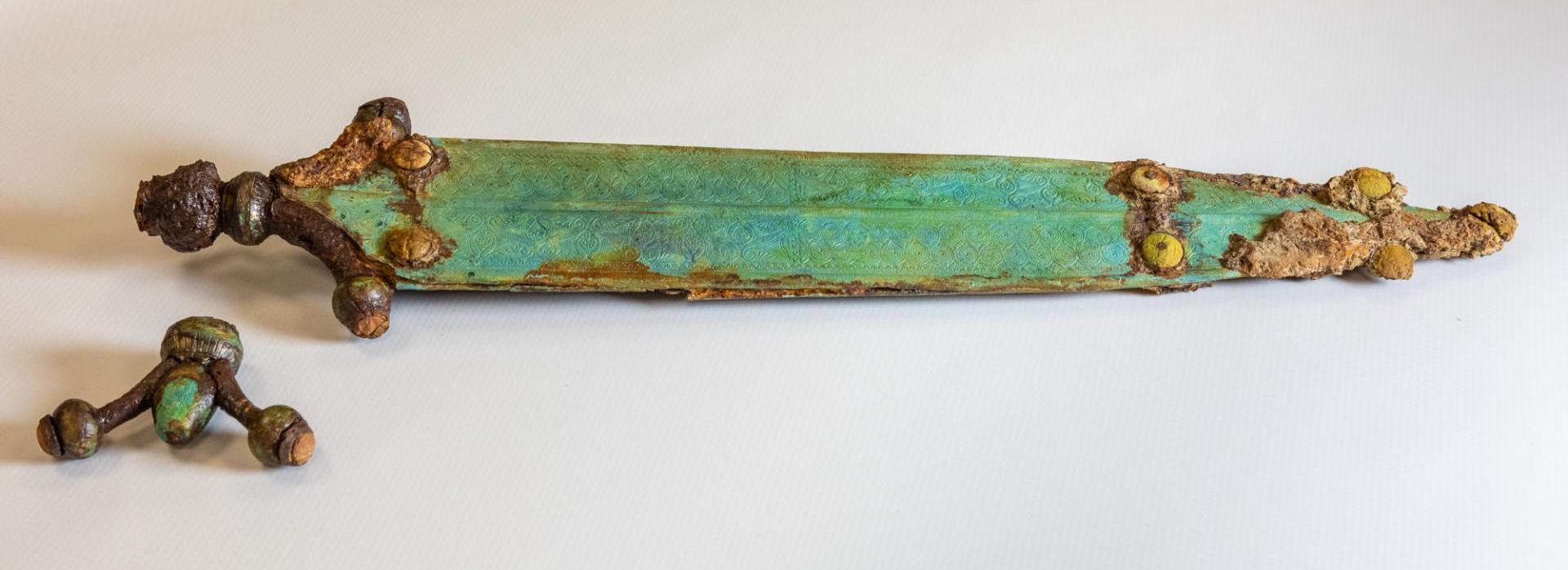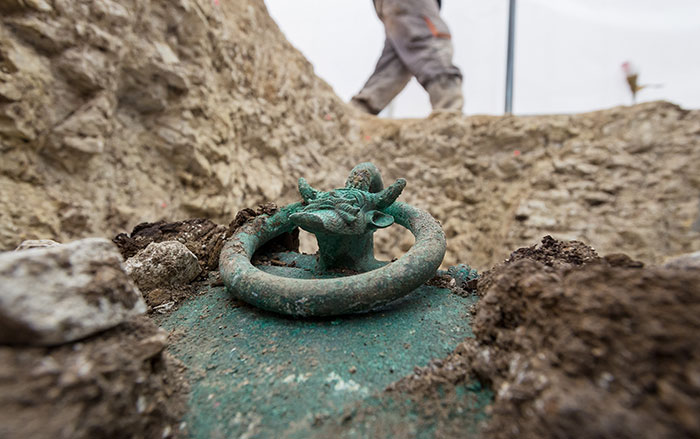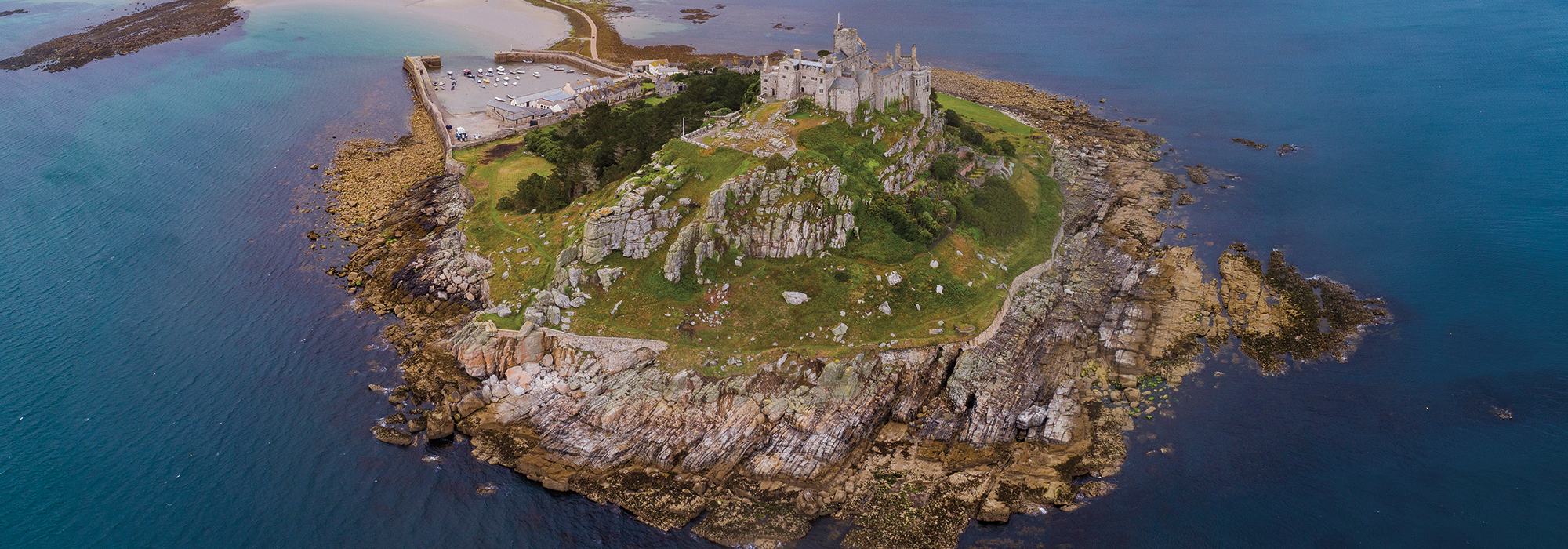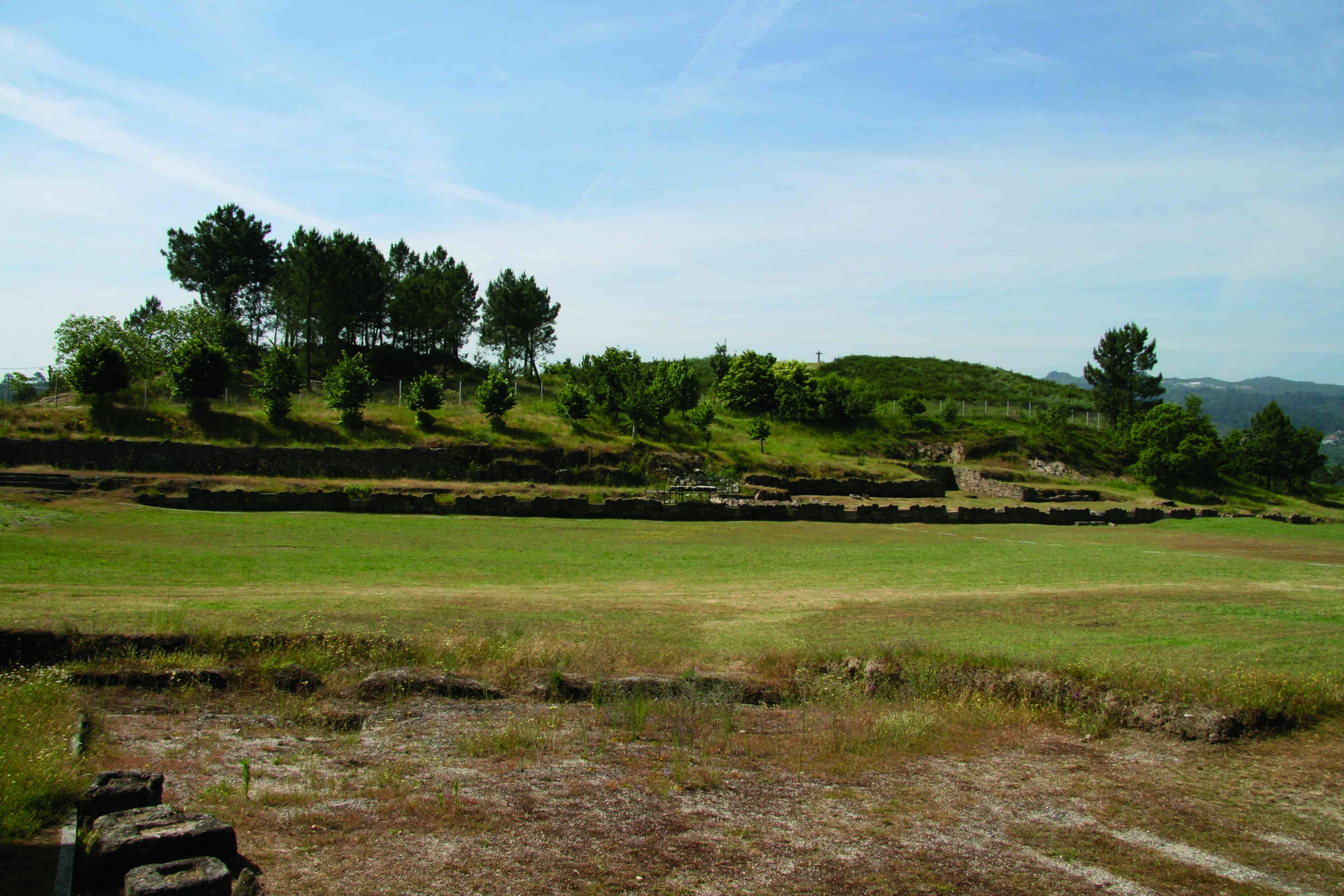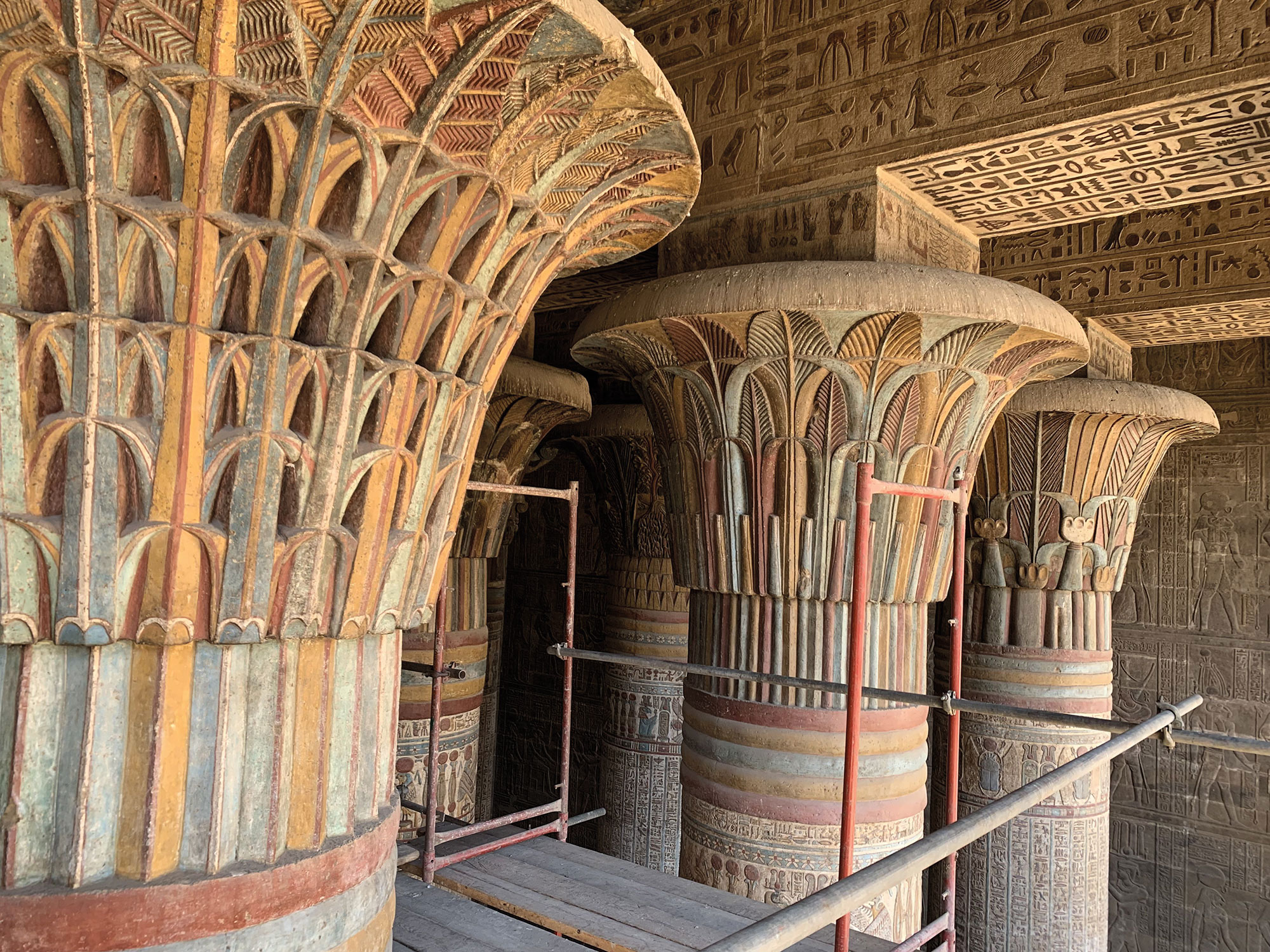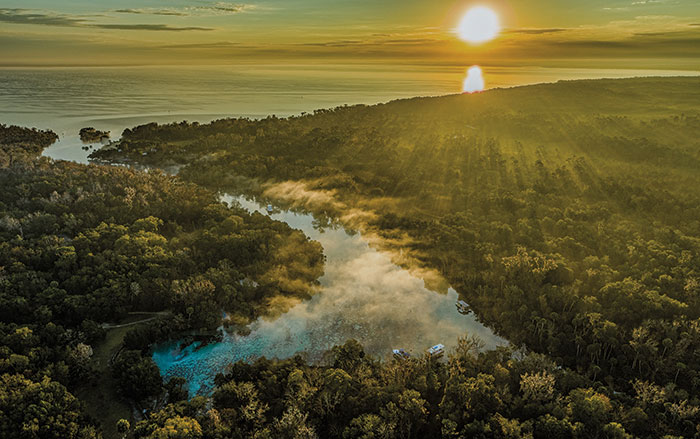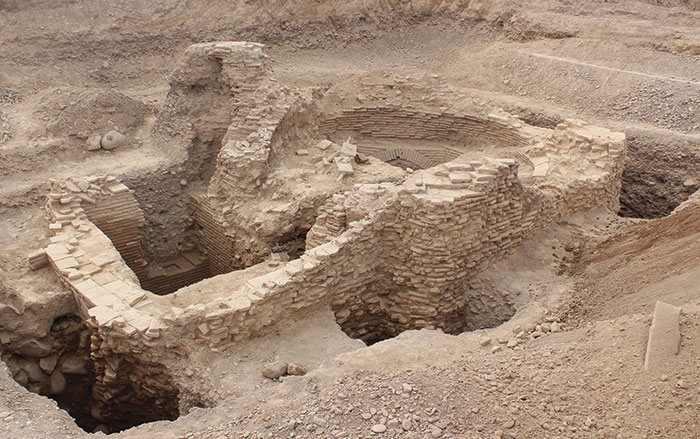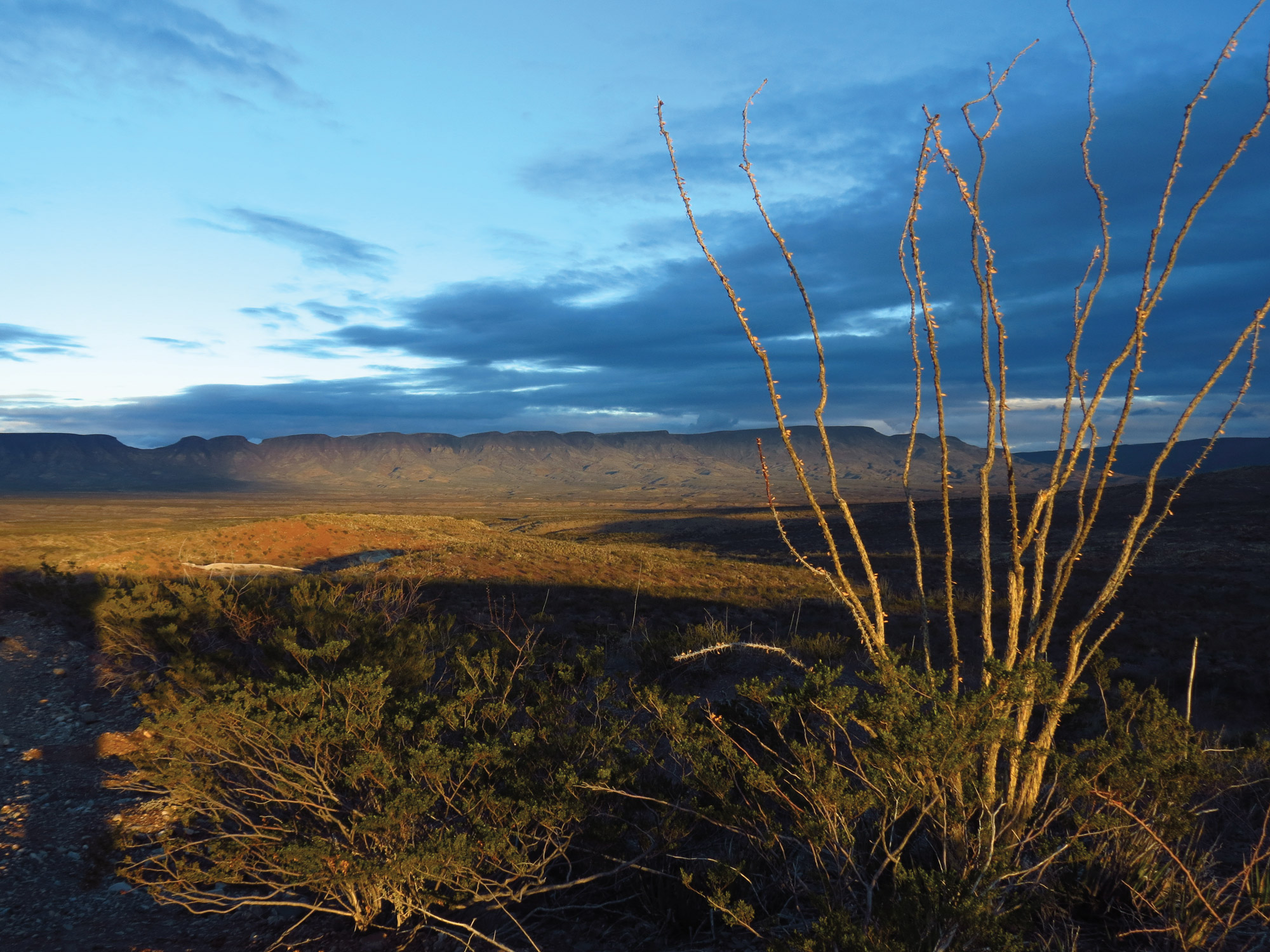
CREUZIER-LE-NEUF, FRANCE—La Brújula Verde reports that a team of archaeologists from the French National Institute of Preventive Archaeological Research (INRAP) discovered an extensive Celtic necropolis at the site of Creuzier-le-Neuf prior to the construction of a business park. The quadrangular enclosure, which is surrounded by a wide ditch, contains over 100 graves dating to the fourth or the third century b.c. The region was once located at the crossroads of territory inhabited by the Iron Age Arverni, Aedui, and Bituriges tribes. When the team began investigating the burials, they did not find any skeletal remains, which had dissolved due to the highly acidic soil conditions. However, more than half of the graves still contained metal objects that were interred with the deceased. The majority of these were bracelets, either single objects or in pairs, some of which contained elaborate Celtic decorative motifs. Archaeologists also recovered 18 fibulas that were used to fasten the garments of the buried individuals. The two most noteworthy burials contained swords that were still in their sheaths. X-rays revealed that one was particularly ornate and was decorated with spirals, circles, and crescent moons. For more on these tribes, go to "Gaul's University Town."


